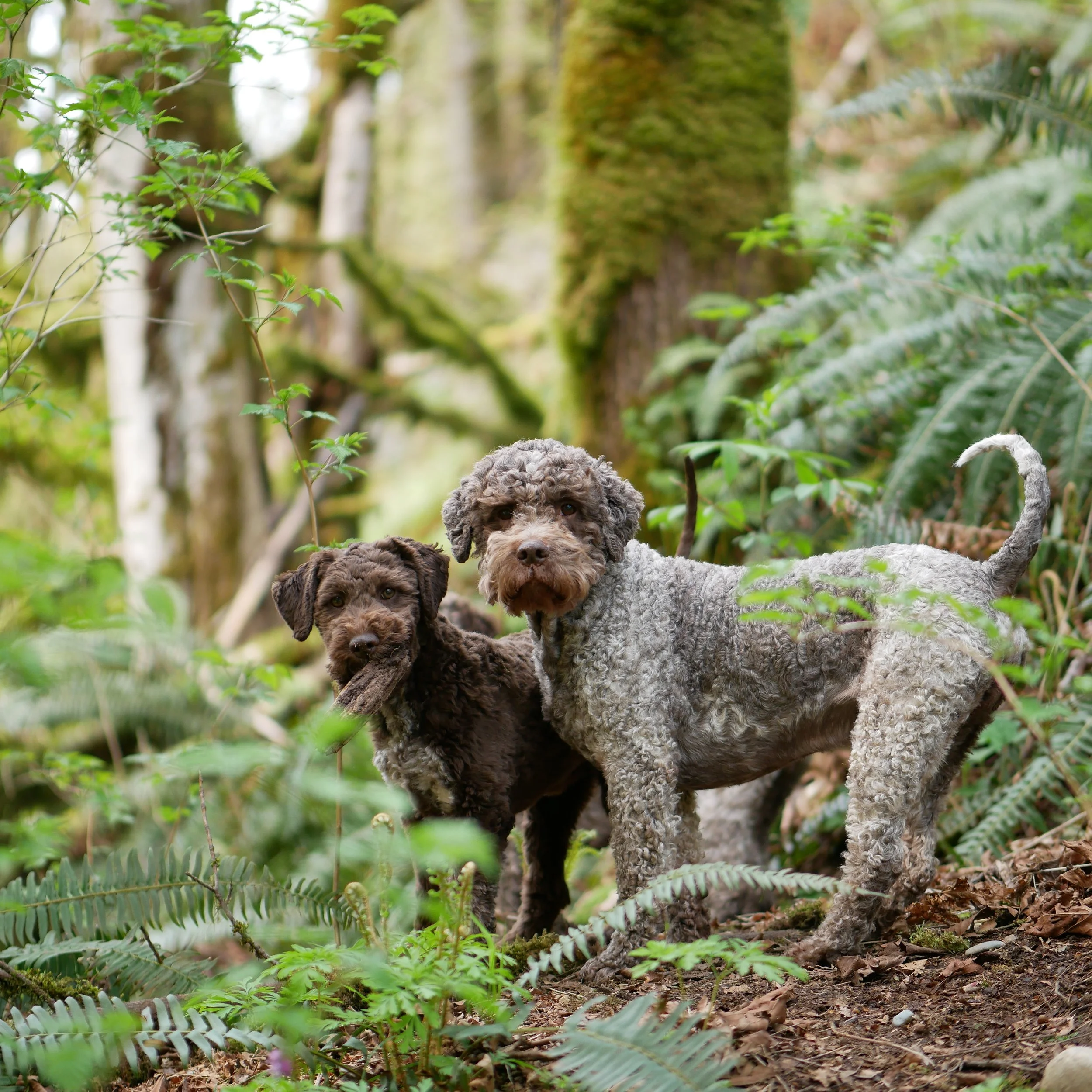Health Issues
Lagotto Romagnolo is fairly healthy breed with life span up to 16 years. However, there are few health problems to be aware of.
Lysosomal Storage Disease Lagotto Romagnolo type (LSD)
Lysosomal storage disease Lagotto Romagnolo type (LSD) is an inherited neurodegenerative disease affecting Lagotto Romagnolo breed.
All our dogs tested before breeding.
http://www.animalabs.com/shop/dogs/lysosomal-storage-disease-lagotto-romagnolo-lsd/
Hyperuricosuria (HUU)
Hyperuricosuria (HUU) means elevated levels of uric acid in the urine. This trait predisposes dogs to form stones in their bladders or sometimes kidneys. These stones often must be removed surgically and can be difficult to treat. HUU is inherited as a simple autosomal recessive defect.
Neuroaxonal dystrophy (NAD)
Neuroaxonal dystrophy (NAD) is a neurodegenerative disease characterized by severe axonal swelling (spheroids) throughout the nervous system. In dogs, NAD has been reported in several breeds and a missense mutation in PLA2G6 gene has recently been identified in the Papillon dog NAD.
Benign Familial Juvenile Epilepsy Lagotto Romagnolo Type (BFJE)
BFJE is a neurological disorder found in the Lagotto Romagnolo breed.
All our dogs tested before breeding.
http://www.animalabs.com/shop/dogs/benign-familial-juvenile-epilepsy-lagotto-bfje/
Hip DYSPLASIA
Hip dysplasia is very common problem for dogs of all breeds. Some breeds will develop it more frequently than others and large breeds affected more than small. Development of hip dysplasia was linked to genetic susceptibility due to hip looseness or laxity, rapid weight gain and obesity, nutritional factors, environmental factors, early desexing and overvaccination.
All puppies are born with normal hips. However, hips in a puppy are very fragile and need to be taken care off. A puppy, genetically predisposed to hip dysplasia and raised on slippery surface, overfed with poor quality food and also neutered at early age will have all chances to develop hip dysplasia. Same puppy, if raised right may have perfectly good hips. There are many factors that play important role in hip development and I think genetics influence is not as significant as many paint it. Breeders screen their dogs for many years now trying to eliminate hip dysplasia but the problem still exist and did not diminish in frequency.
Beside slow-growing and late maturing what are the other main differences in wild and domestic animals?
I can think of several:
Wild animals eat Species Appropriate Diet that is truly organic (raised with no antibiotics or growth hormones and lean)
Wild animals don't get vaccinations (by no means I am advising against vaccination, only to limited Protocol of Jean Dodds)
Wild animals run and play on soft uneven ground building muscles to support joints
I screen my dogs for hip dysplasia for information. However, hip scores alone does not influence my decision to breed or not to breed a dog. For me it is not that important as 2 parents with normal hips can have puppies that develop hip dysplasia and dysplastic parents will have puppies with normal hips. What important is how puppies are raised, nutrition of pregnant and nursing moms, nutrition of young puppies and environmental factors during growth that will influence joint development as most damage to hips occur in the first 60 days of puppy life.
Species appropriate diet, soft uneven ground to run on for exercises and no slippery surfaces in the house or use of stairs creates a very hip friendly environment. However, puppies go home at the age of 8 to 10 weeks and this becomes your job to protect hips until the dog is fully grown.
Few links for you to ponder.
https://vetchick.com/2017/01/ofahips/
https://thewholedog.com/?s=canine+hip+dysplasia
https://www.dogsnaturallymagazine.com/3-major-mistakes-cause-dog-hip-dysplasia-joint-disease/
https://shoppuppyculture.com/pages/the-learning-center
https://www.dogsnaturallymagazine.com/vaccines-collagen-and-joint-disease/
https://www.sciencedaily.com/releases/2012/03/120326112842.htm
https://thewholedog.com/canine-hip-dysplasia-things-to-ponder/
https://www.youtube.com/watch?v=enPCZA1WFKY
https://dogsfirst.ie/health-issues/dog-neutering/
https://www.ncbi.nlm.nih.gov/pubmed/21835457
https://emlabradors.com/2016/08/hip-dysplasia-genetic-or-environmental-things-to-ponder/
https://healthypets.mercola.com/sites/healthypets/archive/2016/09/19/running-with-dogs.aspx
Hernias
A hernia occurs when abdominal wall has a weak spot in the muscle or connective tissue and abdominal organs can protrude through. The severity of the hernia depends on the size of the defect. There are different types of hernia depending on the location.
The most commonly seen hernias in puppies are umbilical and inguinal. Small hernias that you are able to push back inside called reducible and don't require surgical repair. Some veterinarians will advise to repair it during neuter/spay procedure. In some most severe form, abdominal organ can slip through the hole and get strangled causing severe pain, nausea and vomiting and could lead to death if not treated immediately.
https://vcacanada.com/know-your-pet/hernia-umbilical-in-dogs
https://www.thesprucepets.com/identifying-hernias-in-dogs-5078897

